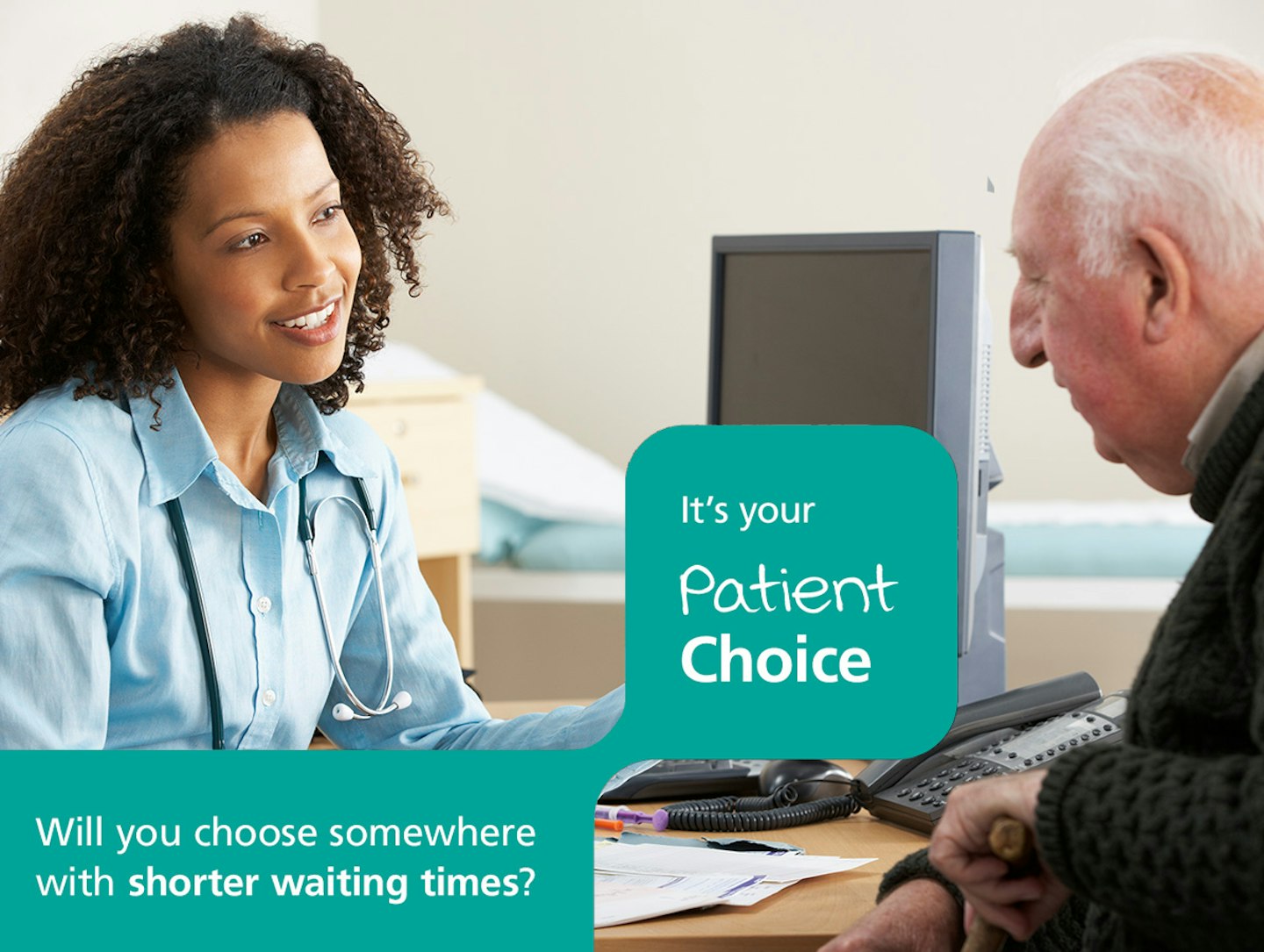Taking care of your health, or that of a loved one, is one of the most important things you can do. And when it comes to your health, no one is better placed to make the right decisions than you are.
Illness or injury can have a big impact on our lives and can sometimes feel as though choice has been taken out of your hands. But there is a simple way to have more say over where you see a specialist.
Patient Choice is an NHS initiative that empowers you to choose which hospital your GP or healthcare professional refers you to for specialist care.

What is Patient Choice?
Did you know that, in England, in most instances you have a right to choose which hospital you go to when you are referred to see a specialist? In a nutshell, Patient Choice is the ability to ask for exactly that.
If your GP suggests a referral to a specialist, you can choose where to go based on what’s important to you. This can be an NHS or independent health hospital, (as long as they provide NHS services, ) at no cost to you.
How to make a choice
And while you can make your choice during your GP appointment, you don’t have to decide right then. Choosing where to receive care can be a big decision, so, you might want some time to think about it or to speak to a friend or loved one.
You can ask that your list of options is made available to you so you can select your preferred option later, either on the NHS App, online, or by calling the National Referral Helpline.

PEOPLE WANT TO FEEL PART OF THE DECISION MAKING PROCESS
Dr Natalie Rout, a GP in central London, tells us more about Patient Choice “Patient Choice gives people autonomy. When they are choosing somewhere to access healthcare, it doesn’t necessarily have to correspond with their post code. Having that patient choice means that they can fit it into their schedules, be that where they live or work, and it gives them a lot more flexibility. People want that choice. People want to be able to say, ‘I made an informed decision about where I went.’ I think it means they are more likely to attend their appointments if they feel part of the decision-making process. I will be quite up front with patients and say, ‘This is your closest hospital; however, the waiting time is double the amount than if I sent you to another hospital. What would you prefer?’ Waiting times are one of the biggest priorities and location is the second. When assessing where to send someone those are the two things that we will discuss. Generally, people are very surprised and then quite happy that they are able to choose. It’s not for every service but for a lot of services you do have a choice of where you go, so that means you can see what’s convenient for you and what fits into your lifestyle.”
Get seen quicker
If your GP has suggested seeing a specialist, it might help to be seen quickly. And that’s one of the major benefits of Patient Choice: knowing the waiting times for appointments at different hospitals is one valid reason you might opt for one over another.
Other reasons for making your choice might include geography and transport options – for example, it might be easier to reach somewhere further away with better public transport links, or you may want to receive treatment nearer to family or friends, so you can stay with them during your treatment or recovery.
You can look up waiting times and distance on the My Planned Care website (myplannedcare.nhs.uk), where you can search by region and speciality.

Who is Patient Choice for?
Most people can benefit from Patient Choice. There are a few exclusions such as those needing emergency care or those in the armed forces (for more details visit nhs.uk/patientchoice).
As long as it’s a routine referral, you’ll likely have a right to choose where you are referred. Some common conditions that may be referred include knee replacements, hip replacements, hernia, and gallstones.
Nothing is more important than your health, and during a potentially worrying time, having some choice over where you go can make a big difference.
For more information visit nhs.uk/patientchoice

